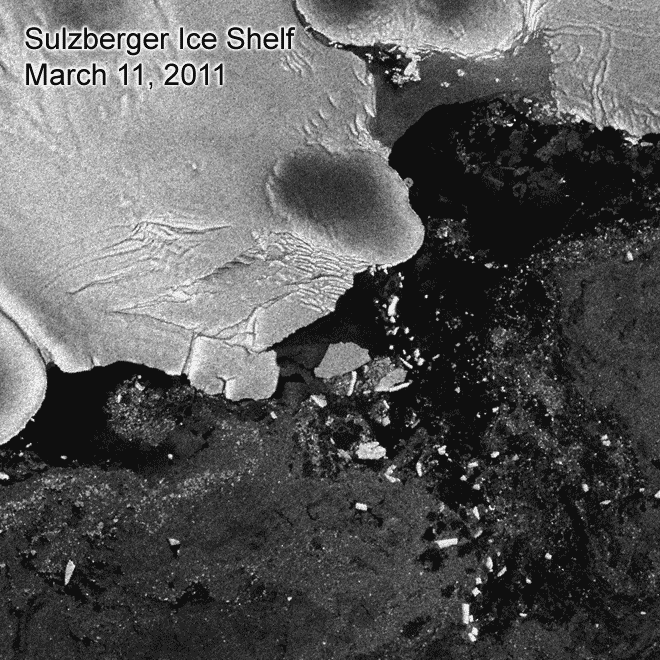New space-based images show the same tsunami that devastated Japan also caused a series of giant icebergs to break off halfway around the world in Antarctica.
On March 11, a magnitude 9.0 earthquake struck off the east coast of Japan. Combined with the tsunami it unleashed, the event led to the deaths of at least 15,000 people and inflicted damage costing upwards of $235 billion.
Yet the destructive wave didn't just crush Japanese shores. The tsunami rippled through the Pacific Ocean, bent around New Zealand and hit Antarctica after a little more than 18 hours, according to an upcoming study in the Journal of Glaciology.
"This [is] the first observational evidence linking a tsunami to ice-shelf calving," the authors wrote in the study, released by NASA today.
The tsunami only reached a foot high after traveling 8,000 miles to the Sulzberger Ice Shelf, but the European Space Agency satellite Envisat was able to survey the damage through thick cloud cover with its radar instruments.
In total, the tsunami liberated about 48 square miles of icebergs from a region that had remained essentially unchanged for close to half a century. The largest iceberg that calved off of the Sulzberger Ice Shelf into the Ross Sea measured about 7 miles long by 4 miles wide.
Video: NASAexplorer/YouTube
Images: European Space Agency/Envisat/ASR/NASA
Citation: "Antarctic ice-shelf calving triggered by the Honshu (Japan) earthquake and tsunami, March 2011." K.M. Brunt et al. Journal of Glaciology*, Vol. 57, No. 205. Published online ahead of print.*
See Also:

